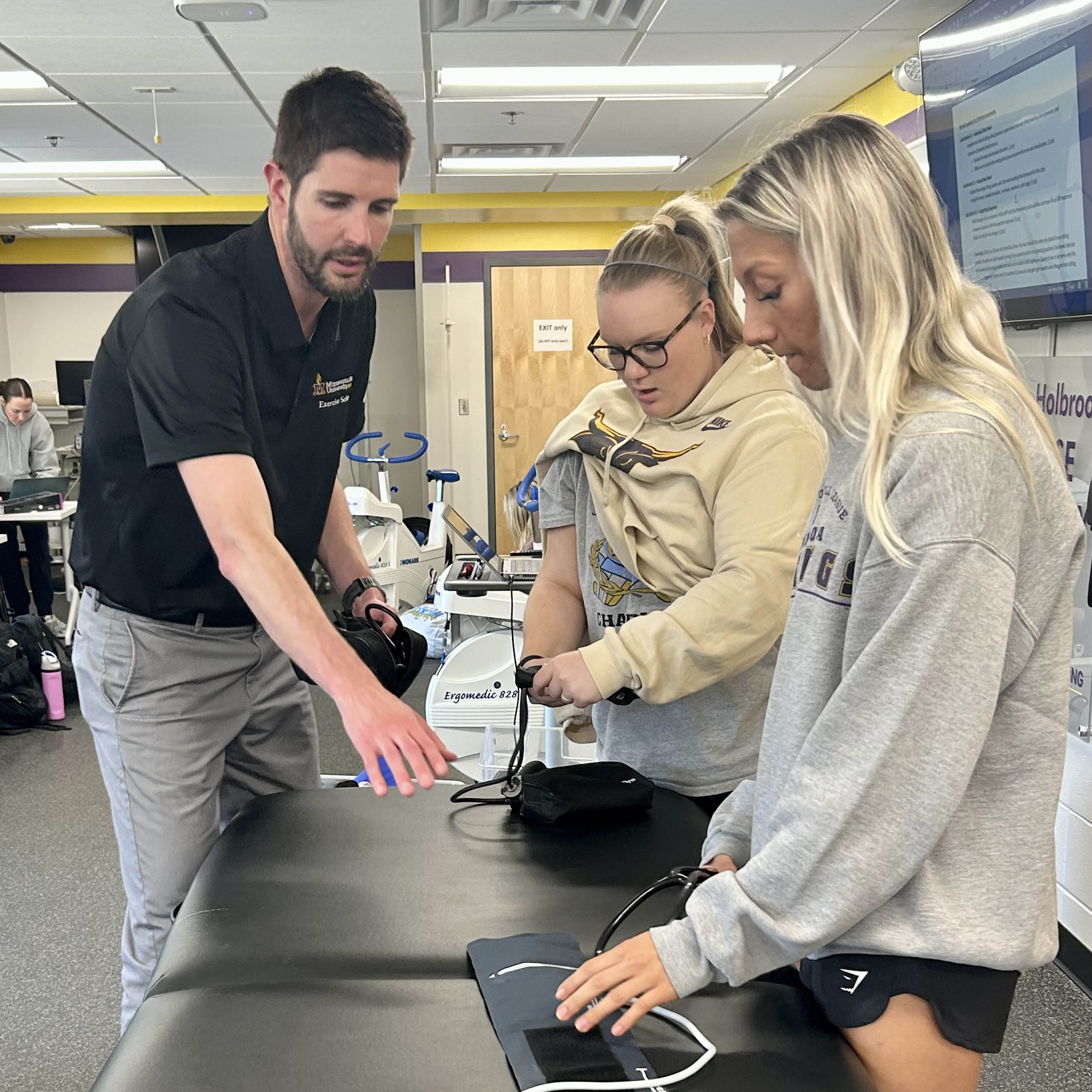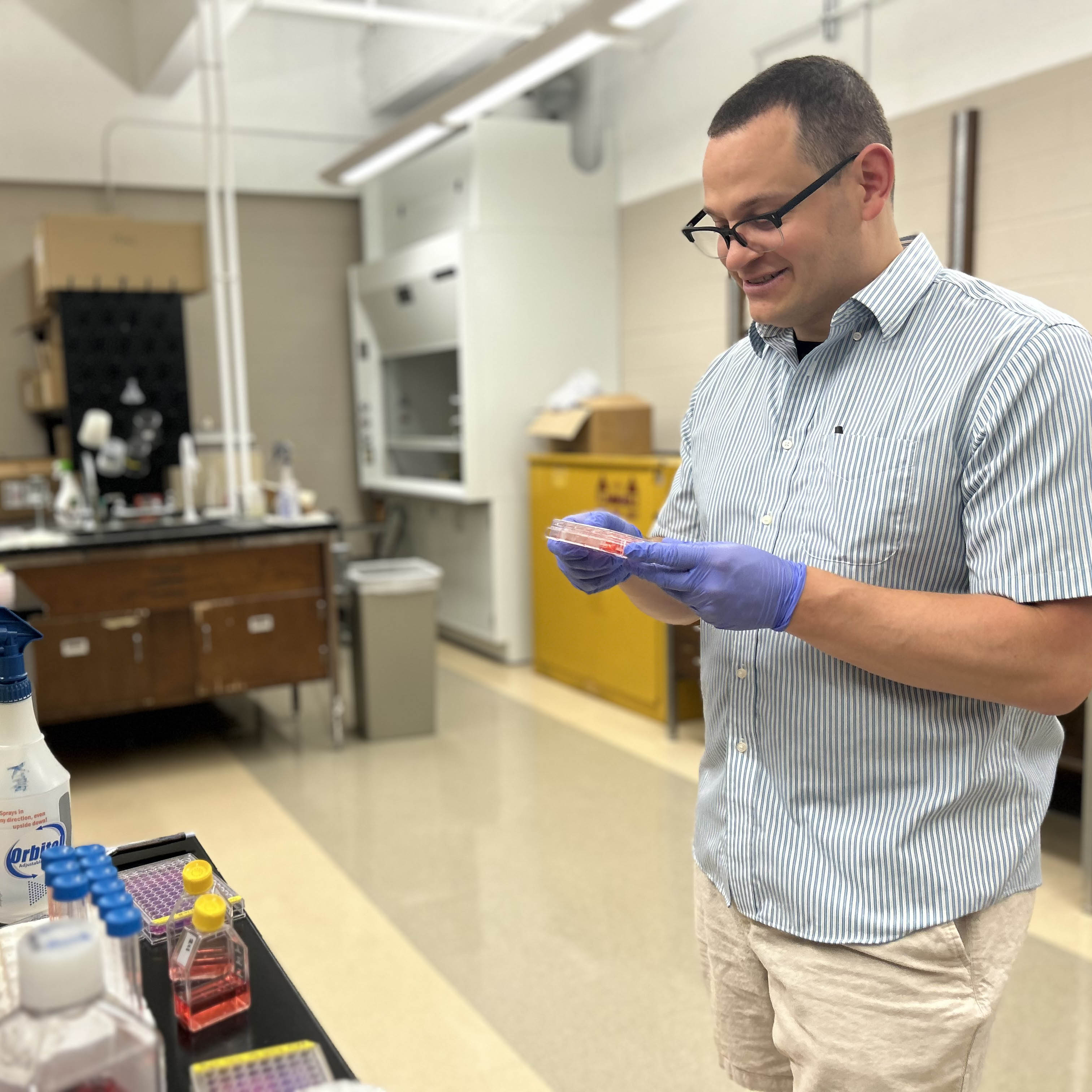Finding the CURE
October 01, 2025
Published In: Today Magazine
Program Gives Undergraduate Researchers More Opportunities
BY GRACE BRANDT '13
Students exploring how different medicines could potentially augment the human body’s immune system to kill cancerous blood tumors in Dr. Keenan Hartert’s biology class is impressive enough on its own—but it’s even more impressive that it took place in a 200-level biology class.

Hartert’s lab research project was one of Minnesota State University, Mankato’s 2024-2025 Course-based Undergraduate Research Experiences (CUREs). Professors who are chosen as CURE Fellows implement a research experience in one of their courses in an effort to offer more research opportunities to students, especially at introductory course levels.
“[This project] achieved the perfect balance that challenging labs are meant to,” Hartert said. “Besides the key factors such as project management and planning, teamwork, resilience when things go wrong, data analysis, data visualization and technique, it's simply a big deal to be in charge of your own cancer research project.”
Amber Paulsen, one of the students in Hartert’s course, added, “It felt like I was taking what I learned from class and directly applying it to current research. It was a fun, involved lab that was challenging yet achievable.”
According to Patrick Tebbe, director of the University’s Undergraduate Research Center, CURE fellowships have been offered through the URC since 2023. Tebbe explained that the University has had a strong emphasis on research for decades, but underclassmen didn’t have as many opportunities, especially because individual research projects could be cost-prohibitive. Securing funding through the Minnesota State Mankato Foundation allowed the URC to offer fellowships to professors to implement a project in their classes. The number of fellows varies every year depending on how many apply, with the URC committed to supporting a diverse range of fields.

Once a CURE is finished, the fellows present about their experiences so that other professors can learn and have more resources to implement their own projects. While Tebbe said it’s too early to tell how many new research projects have been inspired by CURE presentations, they’ve received “very positive” results so far.
“If you look at some of the video [presentations], some of those students are doing great things integrated into their classrooms,” he said. “For a lot of programs, with first- or second-year students, they’ll go on and do something else in their junior or senior year based on their exposure to research. We’re trying to communicate to students, ‘You can do this in an intro class, and making this discovery could lead to a bigger research project.’”
Dr. Corey Selland, an associate professor in the University’s Exercise Science Program, was another CURE Fellow this year. His upper-level course’s project focused on conducting health-related physical fitness tests.
“I wanted to give students the chance to experience the full research process—from conceptualization to dissemination—in a way that extends beyond traditional assessments,” Selland said. “Embedding a CURE into the class allowed more students—regardless of prior experience or confidence level—to participate meaningfully in research.”
Selland said the CURE project gave his students a chance to see “real-world application” of doing research and scholarly work, as well as learn important soft skills such as constructive feedback, communication, teamwork and workload balance.
“Students are often more capable than they think—especially when given the guidance, tools and trust to take ownership,” he said.
Although his CURE experience was in an upper-level course, Sellend appreciates the transformative benefits of introducing research early in a student’s academic journey.
“It helps students see themselves as knowledge creators, not just consumers,” he says. “For students who might not have considered graduate school or research-based careers, it opens doors and shifts mindsets. At the lower level, it also normalizes the idea that research is for everyone—not just honors students or those with a lab background.”
From IO to AI
From IO to AI How Two MSU Alumni Are Humanizing AI in the Workplace By Joe Tougas ’86
Building Skills, Confidence ... and a House
Building Skills, Confidence ... and a House. Construction Management Club illuminates the field for girls. BY JOE TOUGAS '86
Back to School
They met at a movie on campus. Nearly 60 years later, they had a return engagement. By Joe Tougas ‘86.
